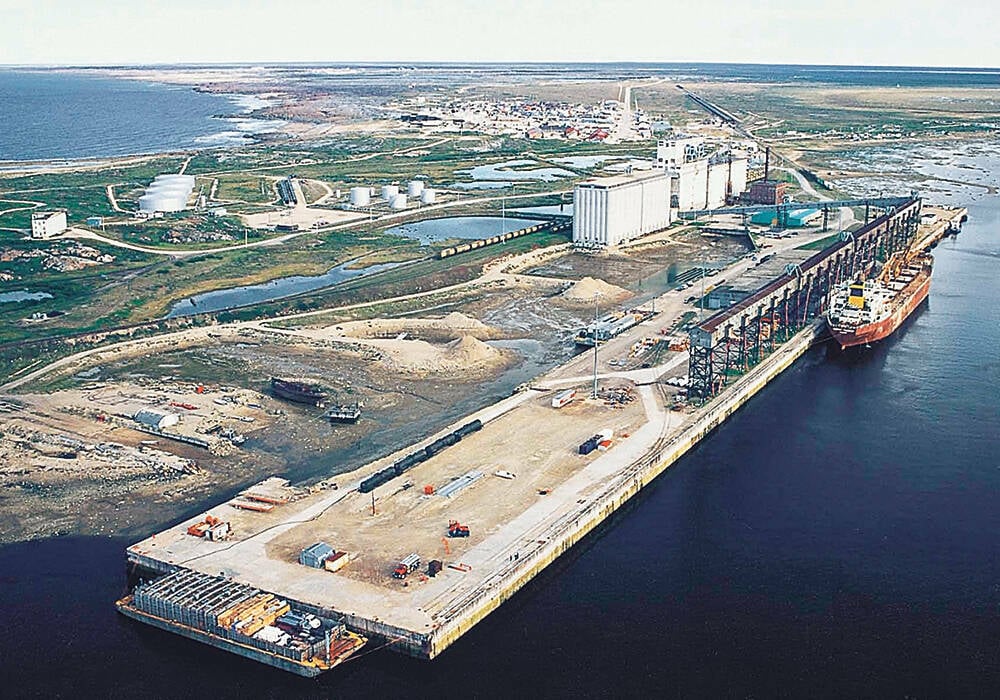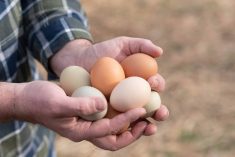Former prime minister Pierre Elliott Trudeau once noted that living next to the United States is “like sleeping with an elephant. No matter how friendly and even-tempered is the beast, one is affected by every twitch and grunt.”
On Nov. 5, the elephant did more than twitch; it sneezed, and Canada is likely to catch a cold.
The electorate south of the border has voted and the impact is going to reverberate throughout the Canadian economy, including, or even especially, in agriculture.
Read Also

Port of Churchill revamp gathers pace
Canada’s Port of Churchill Plus update plan hopes to expand trade, including agriculture trade, at Manitoba’s Arctic sea port
In some ways, it does not really matter which party won the White House and U.S. Congress. Protectionism is on the rise in the U.S., and I don’t see Canada being prepared to respond.
On the campaign trail, President-elect Donald Trump called for massive tariffs. In the past, he has threatened to rip up the Canada-U.S.-Mexico Agreement (CUSMA, the former NAFTA).
On the other side, Vice-President Kamala Harris was one of only 10 senators to vote against CUSMA when the agreement was ratified. She has stated that the agreement made it far too easy for companies to outsource jobs and that she would have used the 2026 CUSMA review to address her concerns.
Now we know which version of protectionism we are facing. Trump will be president again. He has vowed to bring manufacturing back to the U.S. by applying tariffs to imported products. He is also tying political goals to U.S. market access. For example, increased defence spending by Canada is likely going to be a condition of ongoing presidential support for CUSMA. Agriculture, particularly dairy, is going to be a target for U.S. negotiators.
How is Canada going to respond?
The first step would be having a strategic plan for agriculture and food trade going into the 2026 CUSMA review. I cannot find evidence of such a plan.
The Government of Canada has a responsibility to call together farmers, processors and provincial governments to develop a strategic response to U.S. policy makers, who are calling for limits on agriculture and food trade. There can be no further delay.
What are the key elements that need to be included in this strategic plan? The first component is that we must not trade off one commodity group or region of the country to protect others. We saw the potential for this when the Chinese government instituted an investigation into canola exports from Canada in response to Canadian tariffs on electric vehicles, aluminum and steel.
Second, Canada needs to stress the benefits to U.S. national security that are created by our open trade. In an uncertain world, agriculture and food trade can be used as a weapon in political disagreements between countries.
Canada and the U.S. are each other’s largest market for food and agricultural products. We need to be able to demonstrate to U.S. negotiators that this trade will not be threatened by diplomatic disputes, something that may happen when trading outside of North America.
It is in the national security interest of both countries to secure trade between us and to limit any political uncertainty within the North American market.
Third, Canada must be ready to demonstrate the cost to U.S. consumers that will result from growing protectionism. For example, recent changes to U.S. country of origin labelling regulations will discriminate against Canadian pigs, cattle and red meat exports. This will introduce new costs into the North American supply chain, which will raise the price for consumers and lower the return for farmers.
Why is the Government of Canada not aggressively pushing back on this legislation? At a minimum, we should be advocating for alternative means of informing consumers while protecting the integrated North American market: a “product of North America” label, for example.
Fourth, going into the CUSMA review, Canada must stress the importance of unified national standards. We have negotiated a trade agreement with the U.S., not with 50 individual states.
Recent actions from state governments have reached beyond their own jurisdictions. For example, Proposition 12 in California not only sets out the conditions under which animals will be raised in the state, but imposes conditions on other jurisdictions, including Canada. Other states are contemplating similar measures.
Moving away from national standards will be a further fragmenting force on North American trade and will cost consumers and farmers on both sides of the border.
Finally, Canada must speak with a common voice across governments, industry and farmers. There must be many voices delivering the same message to Washington and state capitols throughout the U.S., which gets back to the importance of calling all stakeholders together to develop a national trade strategy for agriculture and food trade. Time is of the essence.
Cam Dahl is the general manager of the Manitoba Pork Council.















